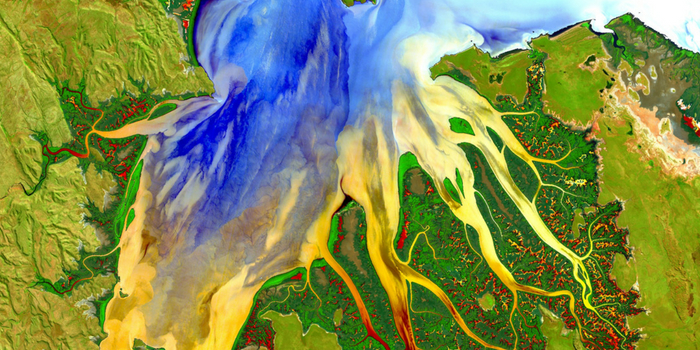News
New investment helps Digital Earth Australia to take off
Published:18 July 2018
New investment helps Digital Earth Australia to take off
The $36.9 million investment in Digital Earth Australia announced as part of this year's Federal Budget will be used to help local business and industry harness the untapped potential of Earth observation data.
For more than 30 years, satellites have been collecting images and other Earth observations of Australia.
Digital Earth Australia Program leader, Trent Kershaw said that in order to make the data accessible it was transferred to the high performance computing capabilities of the National Computational Infrastructure, home to the Southern Hemisphere's fastest supercomputer.
"Digital Earth Australia organises these enormous volumes of freely available satellite data in to time-stamped observations, and prepares it for analysis by removing 'noise' such as cloud cover, atmospheric conditions, and shadows. This reduces the cost and time involved in working with the data and makes it publicly available to government and industry for easy use."
 This Digital Earth Australia image shows the Ord River Estuary where it meets the Bonaparte Gulf, in Western Australia. The image is a combination of a 'false colour composite' which highlights vegetation in green for the land, and a 'true colour composite' to highlight differences in water clarity and constituents.
This Digital Earth Australia image shows the Ord River Estuary where it meets the Bonaparte Gulf, in Western Australia. The image is a combination of a 'false colour composite' which highlights vegetation in green for the land, and a 'true colour composite' to highlight differences in water clarity and constituents.
Mr Kershaw said Digital Earth Australia was already providing valuable insights into Australia's changing environment and supporting evidence based decision-making across the Australian Government.
"In the last year we have partnered with a number of government agencies including the Murray-Darling Basin Authority, the Department of the Environment and Energy, and the Clean Energy Regulator on projects that involve Australia's land and water resources." Mr Kershaw said.
Dr Greg Terrill from the Department of the Environment and Energy says that the benefits of this unprecedented access to satellite data are already being seen by government.
"We use it quite a lot already and the potential is enormous. One example of how we use it is to monitor water holdings, to help balance out how water across the continent is used for agriculture, communities and industry, but also for the environment." Dr Terrill said.
For local industry, the Digital Earth Australia program is a huge step towards understanding how Earth observations can help Australian enterprise to innovate, grow, and prosper.
"Even though it is already providing a number of products to the Australian Government, we know that if we can get Digital Earth Australia into the hands of local business and industry, its potential could be almost unlimited," Mr Kershaw said.
Geoscience Australia is working with FrontierSI (formerly the Cooperative Research Centre for Spatial Information) to develop a strategy focused on engaging Australian business and industry, so they can use Digital Earth Australia to develop new applications and services.
Mr Kershaw said that as the modern global economy becomes increasingly dependent on digital technologies, Australian business and industry need cutting-edge capabilities like Digital Earth Australia to remain internationally competitive.
"Digital Earth Australia has been likened to a time machine that lets us look back through more than 30 years of information about the Australian environment to better understand the impact of decisions we make today. For example, with access to that wealth of information, farmers could use Earth observation data to make informed decisions about how to best manage their land, today and in the future." Mr Kershaw said.
Brad Wooldridge, a farmer from Arthur River in Western Australia says the use of Earth observation data is the future of the Australian agriculture industry.
"Use of Earth observation data gives us a way we can manage seasonable variability, it allows us to change the structure of our business, it allows us to make almost daily changes to our management system, and it gives us integrity in our food and fibre production." Mr Wooldridge said.
Mr Kershaw said that each year, new Earth observation satellites are capturing huge volumes of data and, as the world develops, so does its demand for that data.
"We are just starting to realise how it can improve our understanding of environmental change, the sustainable growth of our cities and regions, and improve our way of life. We're committed to sharing this knowledge globally, and for that reason Digital Earth Australia is completely open source.
"Australia is leading the way with the Digital Earth Australia program, and together with the global Earth observation community we're working to provide the proper connections between data and users."
Further information:
Contact:
Phone:
Email:




